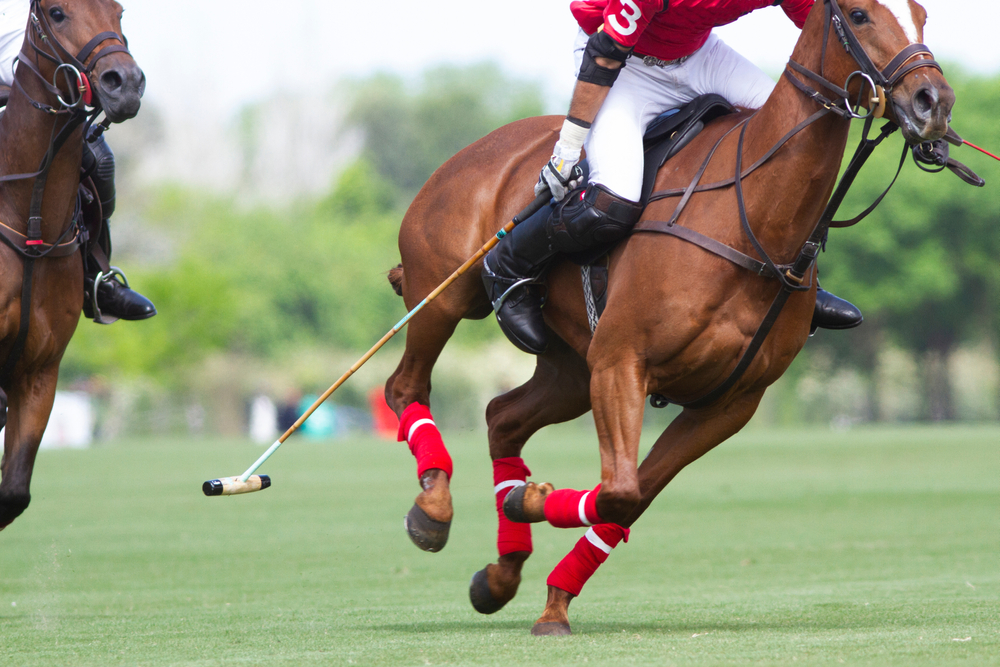Ever wanted to rub shoulders with royalty? Here’s how.
Polo is more than just a sport – it represents entry into the world of luxury travel, elite hospitality and unmatched VIP experiences. If this sounds like something you want to be a part of, you’re in luck. Consider this article the keys to the kingdom, guiding you through everything you need to know to fully immerse yourself in the world’s most spectacular spectator sport.
Once you’ve read up on what makes polo special and how to be a part of it, there’s a good chance you’ll be ready to take part in one of these luxury experiences. If that’s the case, you need to make sure that your international travel solutions are in-line with the splendour that’s expected of polo matches – it is the sport of kings, after all.
You need VIP travel solutions that match the luxury of the event you’re attending. You need comfort and convenience to make the whole trip as smooth as the immaculately churned butter on the post-match sandwiches. You need speed and efficiency that guarantees you’re there for every second of polite pre-game conversation. In short: you need Skyllence.
Before you organise your private jet charter and take to the skies, let’s make sure you’re fully abreast of what makes this regal pastime so special by delving into the world of this luxury sport.
What is polo?
In straightforward terms, the sport of polo is a game played on horseback that involves hitting a ball with sticks and scoring goals. Though it’s come to be associated with luxury and can at times seem a little esoteric, the game itself is one of the world’s oldest sports, dating back to at least the 6th century BC.
The exact geographic origins of things this old are always hard to pin down, but the modern consensus suggests that polo can trace its beginnings to somewhere in central Asia, and there are hints of this in modern languages – such as Tibetan and Balti, where the word polo is translated as ball.
Polo’s history brings serious pedigree, and throughout this span the sport has been the domain of the upper echelons of society – not least because the horses involved in it require extensive specialist training. Seeing the majesty of these animals and the skill of their riders has meant that polo has always been one of the most attractive equestrian sports for spectators, and in the modern era this has seen it eclipse all other luxury sports.

What are the rules of polo?
Polo teams are composed of four players each and the four horses on which they compete. Each match consists of four chukkas – a piece of polo terminology much like a quarter in basketball – consisting of seven minutes, for a total of 28 minutes of playing time per match.
Matches are played on a pitch measuring 300 x 200 yards, with a goal at each end that is 8 yards across. The objective of each team is to knock the ball into their opponent’s goal and score using a mallet – the most iconic piece of polo equipment – with teams changing ends after each successful effort. This continues until the end of the match, at which point the team with the most goals wins (usually involving a lot of champagne and celebration). In the event of a draw, play continues until a winner is crowned – no boring 0-0 stalemates here!
Minutiae aside, the basics of polo rules make for a high-octane, all-action affair that can see dangerous clashes, incredible skill from the riders, and unmatched athleticism from the horses (called polo ponies, another example from the long list of polo terminology). High-goal polo is common, and polo culture means that you’re always guaranteed to see a winner due to the fact that draws cannot occur – another factor that makes it such a special spectator sport.
Who plays polo?
Polo teams and polo players are a broad spectrum, and different polo events attract different kinds of competitors. Take the British Open, Argentina Open, or Cartier Queen’s Cup, for example. These elite and longstanding events feature new competitors every year, but victory is usually secured by established favourites. In the case of the Argentina Open, La Dolfina – an Argentinian team based in Buenos Aires – have won 14 of the last 18 events.
Newer events like the Dubai Gold Cup signify the entry into the sport of different countries, and the large investments that are being made to boost the polo scene in their regions. These events often see local teams take part alongside established international competitors, but make no mistake: in recent years, teams from the UAE and Thailand have seen considerable success, and their status as mainstays in the sport’s elite is all but secured.
What’s involved in attending a polo event?
Imagine you’re set on going to the US Open Polo Championship. What can you expect the elite polo clubs that host these tournaments to offer to spectators and guests? In a word: luxury. Consider the fact that polo events are often attended by VIPs and HNWIs from around the world, from royalty to billionaires. It follows that the kind of event planning that takes place has to be legendary in scale, and must cater to the exquisite tastes and lifestyle trends of those who take part.
This means that the food, drink and entertainment available trumps that of any other spectator sport, but it’s not just what the event can offer you that makes polo special. To misquote JFK, ask not what a polo match can do for you, but what you can do for a polo match – and nowhere is this truer than when it comes to polo fashion.
Attendees looking for the travel and leisure experience of a lifetime head to polo events to make a splash with elegant, unique or striking outfits that will impress. This isn’t the met gala, but it’s safe to say that dressing up for the occasion goes hand-in-hand with watching polo, and seeing what your fellow attendees have brought to the table is a secondary spectator sport in itself!

How do I get to a polo match?
Spending thousands on a bespoke suit and brushing shoulders with royalty can hardly be bookended with an economy seat on a budget airline. If you’re looking for a mode of travel that matches the elegance and luxury of a polo event, then private aviation has to be your choice. Polo travel largely corresponds to the nature of the events themselves, with luxury, style and panache the order of the day. This makes private jets the ideal way to arrive, but there are also practical considerations that weigh into this choice.
Let’s say you’ve earmarked the Pacific Coast Open as your first foray into the world of polo. If you’re at all serious about making new friends in the scene, want to feel that you’re part of polo culture, or simply have practical, logistical considerations around making sure that you can bank on arriving early, then jet charter services are the perfect solution. Providers like Skyllence ensure that you won’t miss a second of the action with their teams of logistics experts, leaving you free to focus on spending your time exactly as you wish.
Wild horses
If you’re determined to attend a polo match this year, there’s no reason to delay. Contacting Skyllence now and organising a chartered private jet direct to one of these illustrious gatherings makes certain your arrival. Not only that, but you’re also guaranteed a level of comfort, convenience and luxury befitting an event of this stature, making private jet charter the perfect way of experiencing the sport of kings.
“Bringing our dedication to luxury to bear is part-and-parcel of what we offer to every client as standard” says Vilma Vaitiekunaite, CEO of Skyllence. “When it comes to polo, though, the bar is clearly raised. We know that passengers heading to a polo event do so with the expectation of regal luxury, and the challenge of meeting this drives us to constantly improve our service. This dedication to a truly red-carpet experience – paired with our expertise in logistics and planning – is what makes us unique in the market, and allows us to state with certainty that we’re the ideal partner for events of this kind.”
